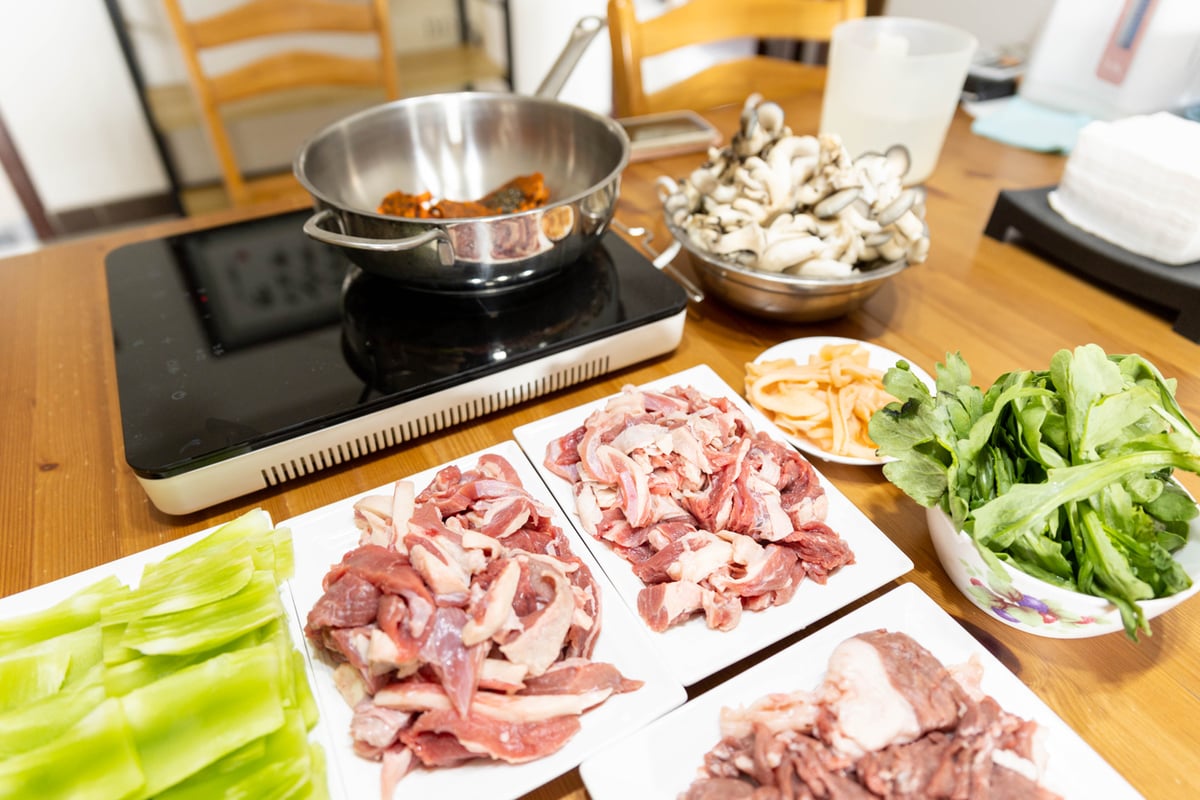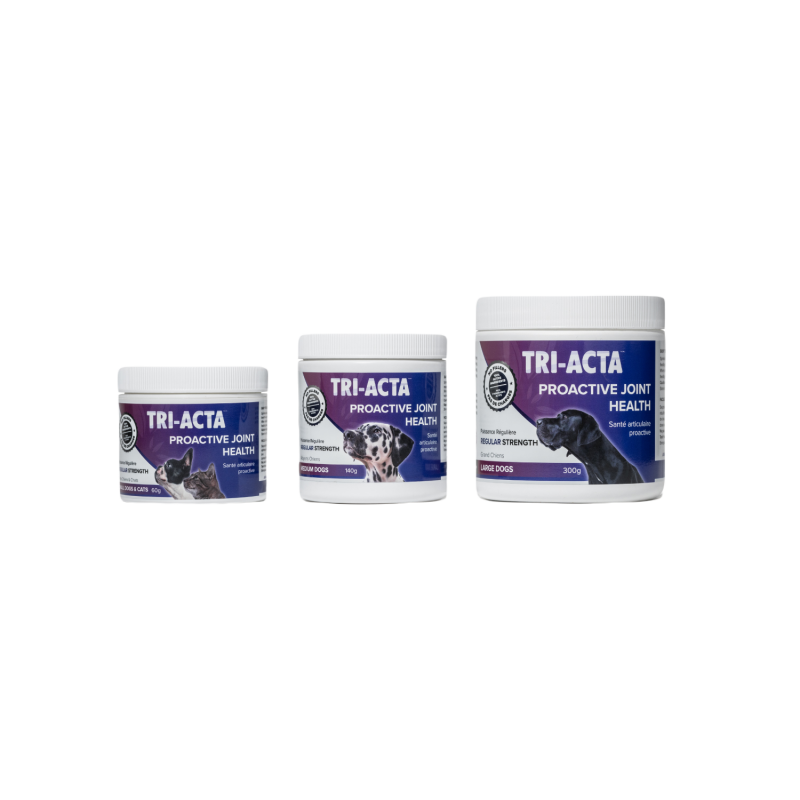Table of Contents
Let’s talk about food for your pup. Of all the things involved in how to take care of a puppy, what you feed them is of utmost importance for their overall health. But with the plethora of dog food options available on the market, it can be tough to feel like you’re making a good decision for your puppy.
When it comes to choosing the right food for your dog to help them get the best start to life possible, the number of considerations that you need to keep in mind include:
- Whether the food is “nutritionally complete” or not. That’s right, you can pick up a bag of puppy food and easily assume that it’s going to be enough to provide the full nutrition that your dog needs, only to read the fine print that says it should be used for “supplemental” feedings only and not make up the majority of your pup’s diet. The best dry puppy food should have a statement somewhere on the bag that talks not only about nutritional completeness but also about whether the food is appropriate for puppies or adult dogs.
- Meat, Meat byproducts, and Meals. We’ve all seen ingredient lists on dog food that read something like “chicken, poultry byproduct, poultry meal.” It’s all meat, right, so it should be good? Well, not so fast. The flesh of an animal will be listed as meat, so chicken, beef, lamb, pork, etc. Meat byproducts are organs, fatty tissues, and bones. Meanwhile, meal can consist of stomach contents, feathers, fur, and even manure. So potentially no meat at all!
- Calorie content. Puppies are growing little babies, so they need more calories compared to an adult dog. But different breeds of puppies need more or less calories depending on their activity level and other factors. In general, however, a puppy around 10 lbs in weight needs about 600 calories daily.
- Vitamins, minerals, and protein. Dogs need calcium, phosphorus, and vitamin D for healthy bones and strong teeth. They also need fats and oils. Ensuring that the food you’re feeding your dog includes these nutrients is essential.
Ever hear the phrase, “You can’t really be 100% sure what’s in your food unless you make it yourself”? Given that the above recommendations apply to your puppy’s food, whether you’re making it yourself or buying it in a store, some dog owners are skipping the middleman and just making puppy food at home for their dog rather than buying it.
And while there’s absolutely nothing wrong with buying your dog commercially prepared dog food (it is the easier option to make sure your dog gets everything they need), making homemade puppy food seems to have its benefits. For instance, some dog owners report that feeding a raw food diet for dogs results in better quality stools—as in, their dog’s poop is less smelly, firmer, and smaller than usual because their bodies are able to absorb and use more from their food compared to commercial dog foods.
Plus, it is nice to know exactly what you’re feeding your puppy, so if allergies, digestive problems, or anything else diet-related pops up, you can not only confidently list every ingredient in your dog’s daily diet to your vet, but you can also easily make changes where you need to.
If you want to try making homemade puppy food for your dog, however, it’s important that you know exactly what you’re getting into.
This article explores homemade puppy food inside and out, including comparing cooked versus raw, preparation tips, and more.
Are Puppy Food Recipes Homemade Actually Healthy?

Whether a homemade puppy food recipe is considered “healthy” or not depends heavily on what the recipe includes and whether those ingredients are the best for your dog. Commercially available dog food uses a mixture of ingredients like meat or poultry, fish, cereals, vegetables, and certain vitamins and minerals so that they meet the nutritional requirements set out for most dogs.
In general, dogs’ nutritional needs include:
- Calcium, phosphorus, and vitamin D to support healthy bones and strong teeth
- Fats and oils to provide energy, which is especially important for active and large dogs
- Protein to maintain and support muscles
These recommendations are a good starting point, but they are not comprehensive enough to build an entire recipe that you can be confident will be satisfactory for your puppy. There are just too many factors to consider—just like some people have to adhere to a certain diet, some dogs need to do so, whether to control an illness or condition or a working dog that needs more calories.
Thankfully, some websites like Balance It make it easy to build a basic homemade puppy food recipe you can bring to your veterinarian or a veterinary nutritionist. Of course, the recipe from the website above incorporates the company’s nutritional supplement into the mix—so if you’re planning on making it yourself and not using that supplement, you want to ensure that you find a suitable alternative.
Do all Homemade Puppy Food Diets Need Supplements?
In general, yes, it’s very important that you include a nutritional supplement in your puppy’s homemade food. Doing so ensures that your dog gets the right amount of vitamins and minerals that they need to grow and develop properly. Because it’s difficult to ensure that your dog is getting the absolute correct amount of nutrients in every serving of homemade puppy food, it’s so much easier to add a nutritional supplement than stress over multitudes of different ingredients and measurements.
You’ll likely start from a base of protein and fats and then add a nutritional supplement to ensure that your dog gets the right amount of vitamins and minerals, especially if you’re just starting out with homemade puppy food.
Like with all dog supplements, there are many formulations available that you can choose from to suit the recipe and needs of your dog:
- Meal toppers that can simply be added to your finished recipe to fill in any missing calories, vitamins, and nutrients that your dog might need
- Powdered, capsule, or liquid supplements that contain a mix of different nutrients and little additional calories
- Singular nutritional supplements that focus on one or two vitamins or minerals only, like fish oil for dogs (fats and omega-3 fatty acids)
Some dog owners even mix in commercial dog food with the homemade puppy food recipe to ensure that their dog gets the needed nutrients and additional calories. The biggest thing to remember about homemade puppy food recipes is that they are completely customizable, and there are no rules aside from ensuring that your dog gets the nutrients and calories they need.
In addition to a nutritional supplement, incorporating a joint supplement into your dog’s diet is important, especially when feeding a homemade diet. Dogs are especially prone to developing joint problems, especially as they age. This means feeding your puppy a joint supplement helps set them up for healthier joints as they age.
TRI-ACTA is a great preventative joint supplement that can be added to any puppy food diet, whether homemade or not. With small daily dosage amounts and 100% active and all-natural ingredients like glucosamine for dogs, TRI-ACTA can be easily incorporated into a homemade puppy food diet without worrying about extra calories or adverse effects.
Here are the ingredients that TRI-ACTA contains:
|
TRI-ACTA Ingredient |
Purpose |
|
Glucosamine Sulfate and HCl |
|
|
Chondroitin |
|
|
Methylsulfonylmethane (MSM) |
|
|
Hyaluronic Acid (available in our extra-strength TRI-ACTA H.A. in addition to the above ingredients) |
|
TRI-ACTA H.A. for Pets
Our maximum strength formula is optimally designed to accelerate the formation of cartilage, minimize inflammation, expedite the healing process, and improve joint conditions.

What to Consider When Preparing Puppy Food Recipes

Now that you have a better idea of what ingredients are needed for homemade puppy food recipes, the next step is being able to prepare them correctly. At first, it’s important to follow one simple recipe and get it down pat before you try something else.
Other important considerations that you should keep in mind include:
1. Preparing a Homemade Puppy Food Recipe Can Be Difficult
As you’ve probably already realized, preparing homemade puppy food isn’t about throwing a bunch of ingredients together into your dog’s bowl. You need to follow precise measurements to ensure that your dog gets the right amount of nutrients.
Plus, you might want to keep the utensils and other tools you use to prepare your homemade puppy food recipe separate from your food since some common human foods are toxic to dogs, and cross-contamination could result in a negative reaction in your pup.
Some examples of foods and plants (not exhaustive) that can cause an adverse or serious reaction in your dog include:
- Alcoholic beverages—dogs can get alcohol poisoning just like people
- Apple seeds—pretty low risk unless consumed in large quantities
- Apricot pits and cherry pits—(similar to apple seeds; the risk of poisoning is low unless large qualities are consumed
- Peach pits—are large and can cause intestinal blockages, and consuming large quantities of peach pits at once or long term can result in acute or chronic poisoning
- Xylitol—commonly found in gum and candy, when a dog consumes even a small amount of xylitol (0.1 g per kg of your dog’s weight) can cause hypoglycemia (low blood sugar), vomiting, weakness, staggering, incoordination, collapse, and seizures
- Macadamia nuts—if large qualities are eaten, these nuts can cause vomiting, ataxia (lack of coordination), weakness, hyperthermia (overheating), and depression
- Tomato leaves and stems—toxic in large quantities, but otherwise can cause weakness, gastrointestinal problems, drowsiness, slow heart rate, confusion
- Grapes—can cause sudden kidney failure
- Garlic—causes damage to red blood cells, which results in a wide range of conditions including anemia
2. Most Recipes Need a Nutritional Supplement
While most puppy food recipes start with a base of protein, oils, and fats, these alone are often not enough. You must ensure your dog receives other essential nutrients in each meal. Calcium, phosphorus, and vitamin D are a few, but there is a laundry list more—too many to list here. As a result, it’s often recommended to include a nutritional supplement in your homemade puppy food recipe to ensure your dog gets the nutrients they need.
You could technically include more ingredients to make up each nutrient your dog needs—and many foods and other inclusions, like bones, include multiple nutrients. However, measuring to ensure that your dog gets enough of everything is quite difficult, and the chance of human error is high, so giving a nutritional supplement is much easier.
3. You Need to Work With a Vet or Vet Nutritionist
Every dog has unique needs. Breed, preexisting conditions, risk factors, allergies, sensitivities, and more must be considered when developing a homemade puppy food recipe. Working with a veterinarian or vet nutritionist ensures that you’re not forgetting anything important when determining what you should and should not feed your dog and ensures that the recipe you land on will be nutritionally complete and meet any budget constraints.
When feeding raw food, many dog owners follow the B.A.R.F. diet, which stands for “biologically appropriate raw food.” The purpose of this diet is to feed dogs the diet they evolved to eat, which includes raw meats and greens.
The BARF diet is high in protein, moderate in fat content, and has minimal carbohydrates. A typical raw diet following the BARF structure will include:
- Muscle meat
- Raw meaty bones
- Organ meat
- Vegetables and fruits
- Supplements
4. Be Prepared to Research and Source Ingredients
Remember that list of ingredients we provided earlier of plants and common foods that could be potentially toxic to your dog? Well, that list wasn’t anywhere close to being exhaustive. On top of avoiding potentially toxic ingredients, you also need to consider any allergies, sensitivities, or conditions your dog has and how certain ingredients can affect your dog.
For example, one source says that for dogs with hyperthyroidism, foods with iodine should be avoided. These foods can include dairy products, seafood, egg yolks, supplements with kelp, seaweed, and high amounts of poultry or beef. Phew!
On top of researching ingredients, to keep costs under control, you’ll probably want to source ingredients from sources other than your local grocery store. Farmers are great sources of large quantities of meat and vegetables.
5. Cooked vs Raw Homemade Puppy Food
There’s a great debate among dog owners that feed homemade food as to which is better: cooked or raw. To be clear, there is no hard evidence that one is better overall than the other, but there are pros and cons for each. As a dog owner, you’ll need to make a decision for your puppy based on their individual needs.
|
Pros |
Cons |
|
|
Cooked homemade puppy food |
|
|
|
Raw homemade puppy food |
|
|
Healthy Homemade Puppy Food to Feed Your Puppy
In general, a homemade puppy food diet should contain an appropriate balance of protein, oils and fats, carbohydrates, and fiber.
Here are some example puppy food recipes you can try:
1. MSPCA-Angell Sample Dog Food Recipe
Developed by a certified veterinary nutritionist, the homemade dog food recipes by MSPCA-Angell are made for dogs up to 60 lbs with no medical problems. These recipes require cooking at the same temperatures you would cook human food.
The appropriate amounts of each ingredient can be found by visiting the link above and clicking on your dog’s weight, but the main food ingredients that these recipes include are:
- Dark-meat chicken
- White rice
- Mixed vegetables
- Vegetable oil
- Nutritional supplements (the recipe recommends Balance IT Canine)
2. Dogs Naturally Raw Beef & Chicken Neck Dog Food Recipe: All Life Stages
The combination of ingredients in this recipe from dogs naturally claims to meet AAFCO nutritional requirements for adult dogs and puppies, with no need for additional nutritional supplements to be added.
In general, the recipe includes:
- 90% lean beef
- Chicken necks with skin removed
- Beef liver
- Chicken heart
- Beef heart
- Pasture-raised eggs without the shell
- Kale
- Broccoli
- Dandelion greens
- Blueberries or mixed berries
- Hulled hemp seeds or hemp hearts
- Green-lipped mussel powder (this can easily be supplemented with TRI-ACTA or TRI-ACTA H.A. to provide more joint health support as green-lipped mussel for dogs is not as effective)
- Himalayan salt
3. The Easiest Homemade Raw Dog Food Recipe (Running to the Kitchen)
This recipe from Running to the Kitchen follows the BARF diet and takes about 30 minutes to prepare. It contains a variety of easily accessible ingredients, including:
- Ground beef
- Chicken livers
- Carrot
- Apple
- Baby spinach
- Whole eggs (shell included)
- Plain yogurt
- Ground flaxseed
- Olive oil
When You Should Opt for High-Calorie Puppy Food

Dogs need a certain number of calories daily to support their energy requirements. The number of calories a dog needs daily depends on their life stage, activity level, breed, and health conditions. In general, puppies need more calories than adult dogs because their bodies are still growing and usually have high energy.
If you take a look at most commercial puppy food brands, you’ll find that puppy food has 50-100 calories more per serving compared to adult dog food. This means that if you’re making homemade puppy food, you need to find ways to increase the amount of calories per serving accordingly. Ingredients like peanut butter, browned ground beef, egg yolks, and kibble are great for making up a high-calorie puppy food.
Summary
Homemade puppy food has gained popularity among dog owners, allowing for complete control over ingredients. While this option offers transparency and customization, it comes with its challenges. Crafting a balanced homemade diet requires precise measurements, nutritional supplements, and consideration of potential allergens and toxic foods. Working closely with a veterinarian or vet nutritionist is crucial to tailoring recipes according to your puppy's unique needs.
When preparing homemade puppy food, it's important to follow reputable recipes, such as those provided by certified veterinary nutritionists, to ensure the diet meets the necessary nutritional standards. Incorporating essential ingredients like protein, oils, vegetables, and supplements is vital. Additionally, considering the puppy's calorie requirements based on factors like life stage, breed, and activity level is essential to support their growth and energy needs.
Ultimately, whether opting for commercial dog food or homemade recipes, the primary focus should be on providing a balanced and nutritious diet tailored to the puppy's individual requirements, promoting their health and happiness in the long run.
Considering that a high number of dogs end up suffering from joint issues later in life, it’s important to incorporate a joint supplement into your puppy’s diet. TRI-ACTA is a great choice for a preventative supplement that you can start feeding your puppy at an early age.
TRI-ACTA for Pets
A proactive approach for developing and younger adult pets to maintain optimal joint health mobility, minimize inflammation and fend off age-related ailments.

Buy TRI-ACTA online or discover where to buy at a store near you.
Newsletter Signup
Subscribe to our newsletter to receive the latest news and exclusive offers.
.jpg?height=2000&name=Cliick_Integricare-DISPLAY-REVISEDV2%20(1).jpg)
Proactive & Therapeutic Joint Supplements
When given daily, Integricare joint supplements recover bone and joint injuries faster and help prevent mobility injuries from happening in the first place.










